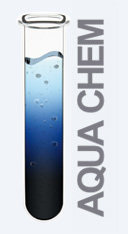Powdered Resins functions: Ion exchange
We previously mentioned the three functions which a powdered resin coat must performs: physical filtering, electrokinetic oxide treatment and ion exchange.
We shall now examine in detail the requirements for powdered ion exchange coats used in thermal cycles.
Current technologies for condensers (since titanium condensers are widely used), pollutants detection (sodium analysers in and conductivity meters) and, most importantly, RO-integrated make-up water production systems – with or without ion exchange resin mixed beads capable of producing demineralized water as good as 100% free of salts, silica and organic substances – have enabled the powdered resins to be used in circuits where this would not have been possible in the past. A practical example of these are the many BWR (boiling water reactor) nuclear cycles using powdered ion exchange resins as their only condensate polishing system even though their cooling is done with sea water.
